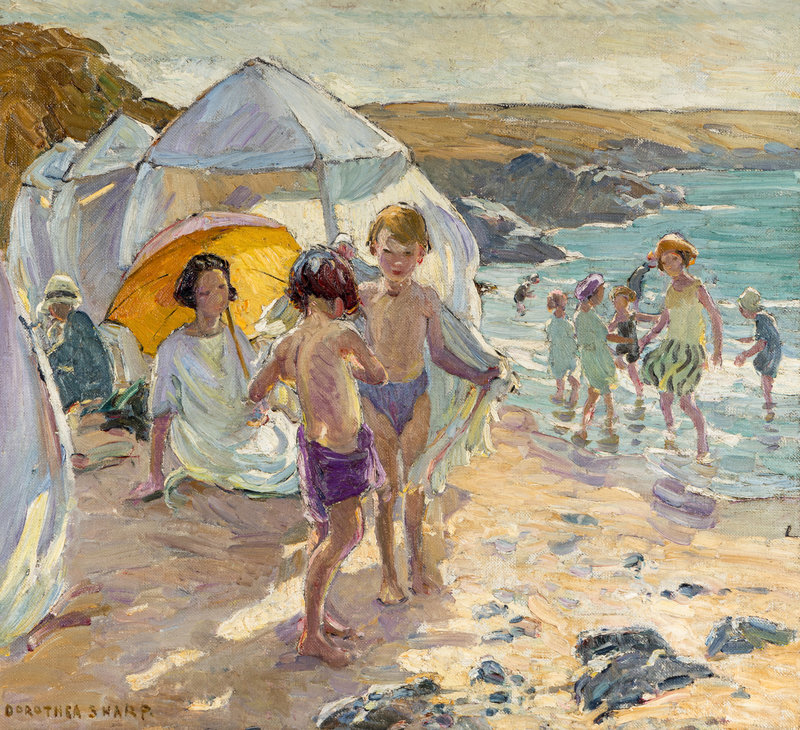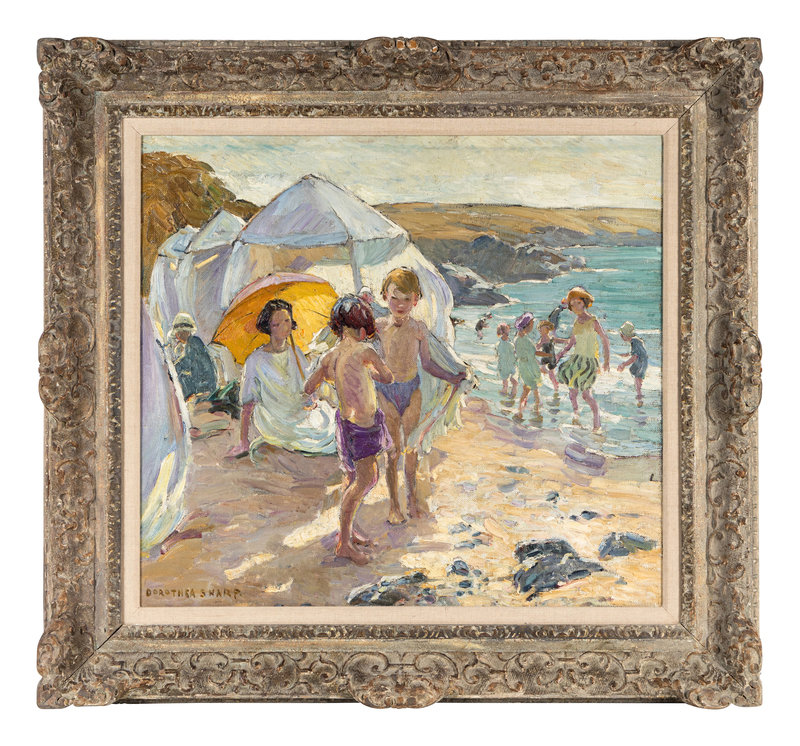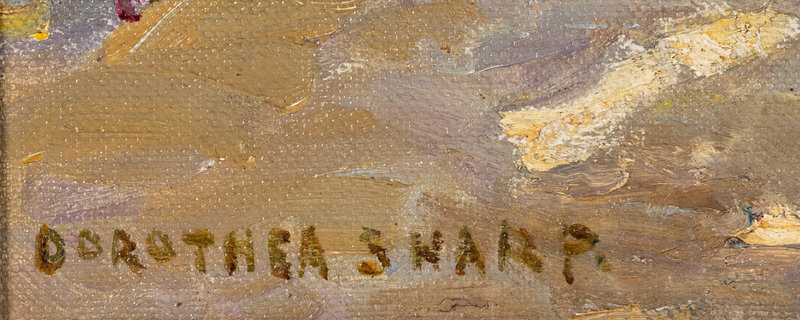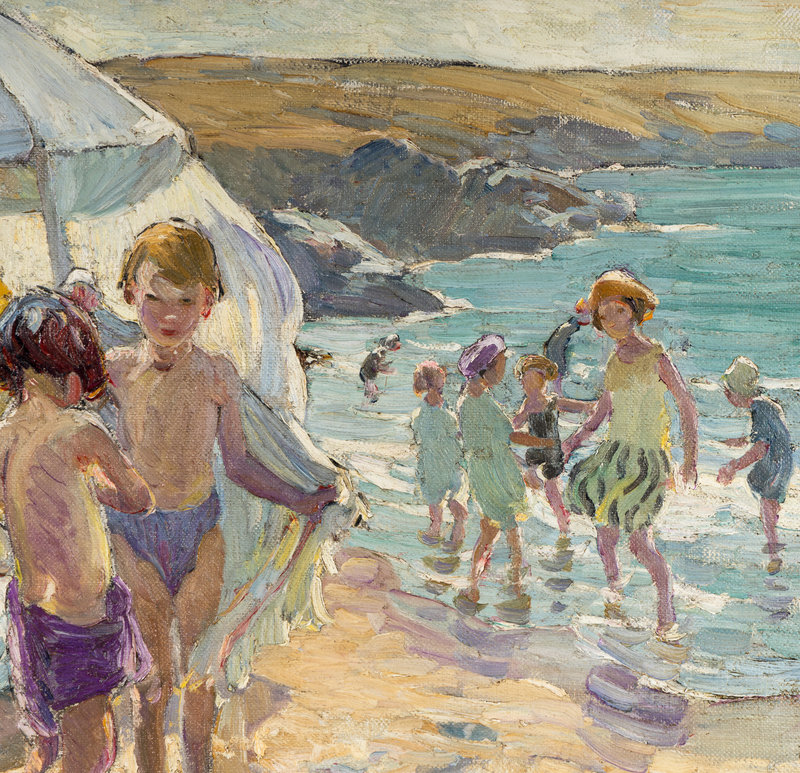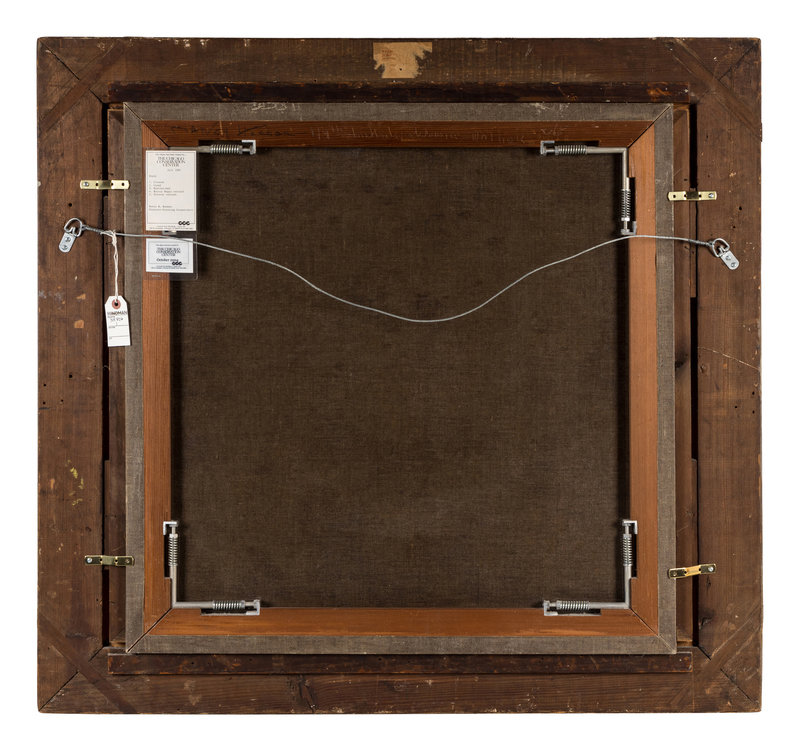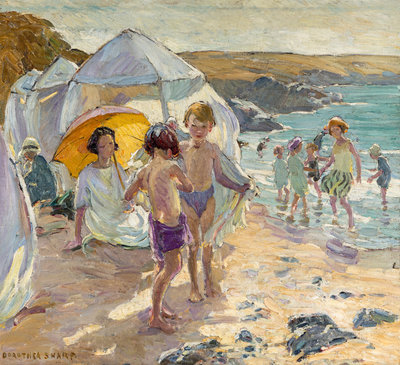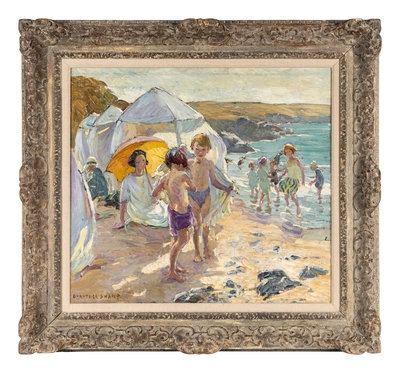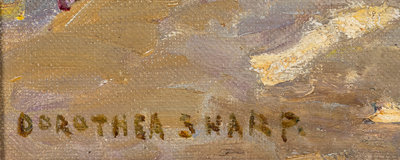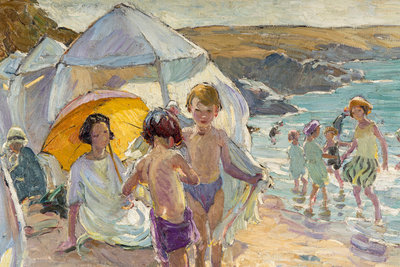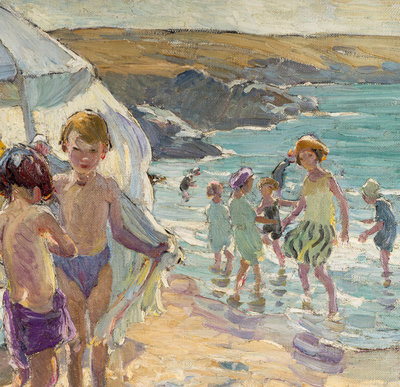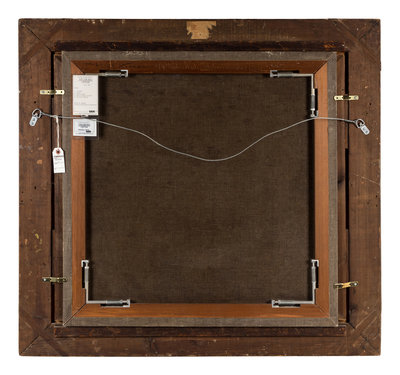Lot 39
Provenance:
Callard of London, Chicago
Acquired from the above by the present owner, 1962
Lot note:
At the Beach (Lot 39) and Children at the Beach and On the Rocky Shore (A double-sided work) (Lot 40) exemplify Dorothea Sharp’s highly impressionistic style and spontaneous brushwork. Well known during her own lifetime as a painter, she captured the wonder of childhood with her depictions of children on the beach and in pastoral landscapes, as well as in domestic settings. The Editor of The Artist praised Sharp as, “one of England’s greatest living woman painters,” and commented upon the charm of her art:
“No other woman artist gives us such joyful paintings as she. Full of sunshine and luscious colour, her work is always lively harmonious and tremendously exhilarating...the chief attractions of Miss Sharp’s delightful pictures are her happy choice of subjects, and her beautiful colour schemes. Rollicking children bathed in strong sunlight, playing in delightful surroundings, her subjects appeal because they are based on the joy of life. And she presents them equally happily, with a powerful technique which enables her to make the most of her wonderful sense of colour” (Harold Sawkins, “Dorothea Sharp, ROI, RBA,” The Artist, April 1935, pp. 55-8).
Sharp first studied art at the Regent Street Polytechnic in London at the age of 21, and then traveled to Paris to continue her training. It was here that she became heavily influenced by the impressionists, especially Monet, with their confident brushstrokes and strong colors. She later wrote, “I think the young painters of this decade little realize what we owe to those great masters of the French Impressionist School” (Dorothea Sharp, The Student’s Book of Oil Painting, New York, 1937, p. 31). However, the artist’s handling of broken light and color was not only derived by her study of the impressionists, but also by instinct. She once described color as “that elusive something we cannot quite define…To have good colour sense is to be in touch with nature…Colour is emotional—it is felt, in its finer sense rather than seen. Colour cannot be taught—beyond a point—it is inborn (The Artist Magazine, April 1931, p. 48).
Upon her return from Paris, Sharp settled in London, where she maintained a studio for the rest of her life. By the 1910s, though, she would spend much of the year in the art colony of St. Ives, Cornwall, drawn to its sunny skies and rocky beaches. It was here that she executed works such as At the Beach and Children at the Beach and On the Rocky Shore (A double-sided work), which delight in the pleasures of a day by the water. Children splash playfully about in breeze-ruffled waves and women contentedly lounge in bright sunshine. The thick, colorful impasto paint reveals the artist’s quick use of a heavily loaded brush and her instinctive paint strokes highlight the carefree and relaxed atmosphere. In these vibrant works, Sharp skillfully renders happy memories of never-ending summer days in the sand and sea.
